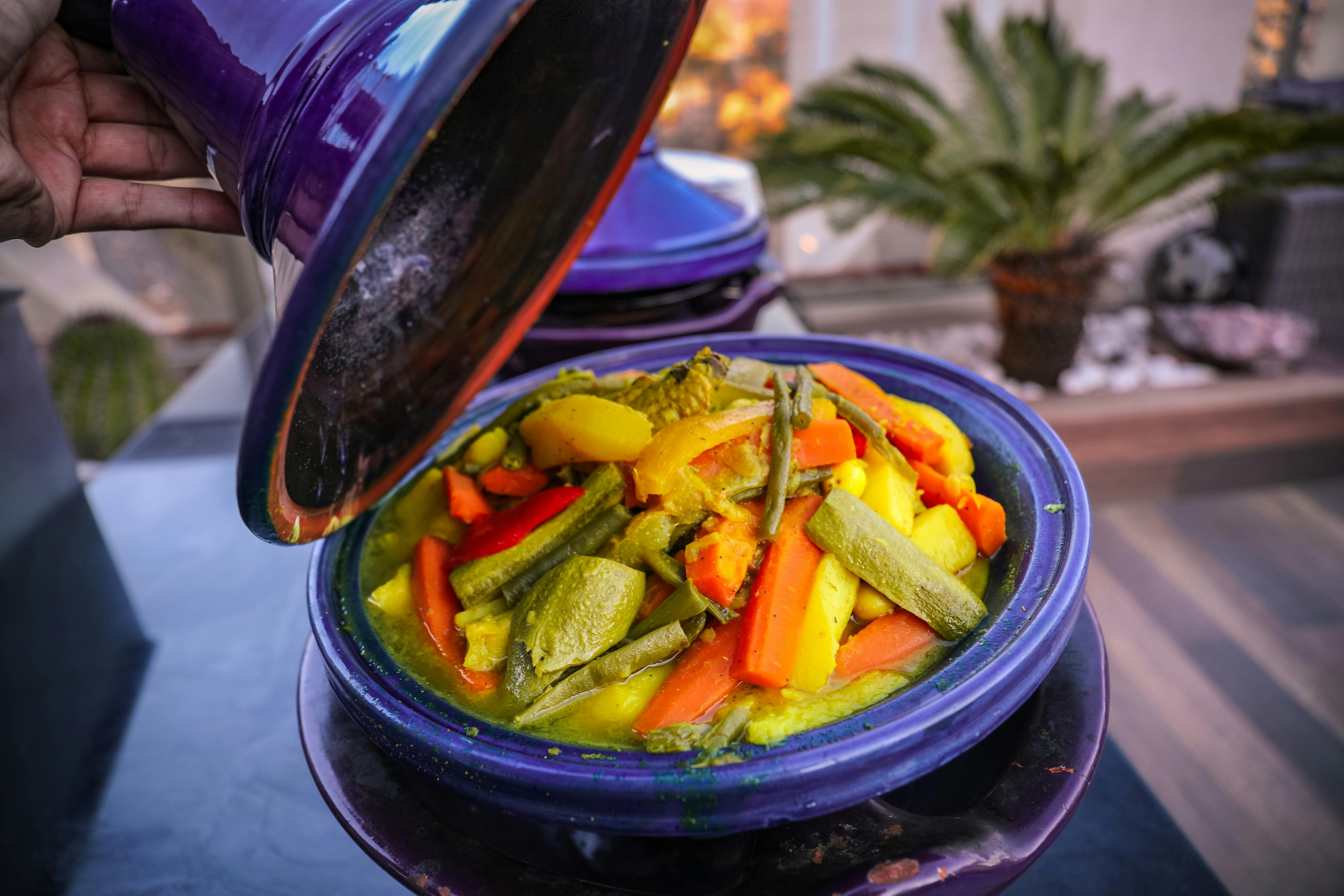Discover The Delights of Moroccan Cuisine: The Perfect Blend of Flavors and Traditions
Moroccan cuisine is a vibrant and rich culinary tradition, renowned for its unique blend of flavors and cultural influences. It's a world of fragrant spices, succulent meats, fresh vegetables, and sweet pastries. This article dives into the heart of Moroccan food, exploring its diverse dishes, unique cooking techniques, and innovative culinary ideas.

The Heart of Moroccan Cuisine: Spices and Fresh Ingredients
Moroccan cuisine is a beautiful composite of Arabic, Berber, and French culinary influences, each adding a unique twist to its flavor profile. The backbone of Moroccan food is the aromatic blend of spices. Paprika, cumin, coriander, and saffron are some staples that give Moroccan dishes their distinct taste. Fresh ingredients like tomatoes, bell peppers, and citrus fruits further enhance the flavors.
The Art of Moroccan Tagine
One of the highlights of Moroccan cuisine is the tagine, a slow-cooked stew named after the earthenware pot it’s cooked in. The dish involves a technique that combines simmering and steaming. It’s a symphony of succulent meats, hearty vegetables, and an array of spices, resulting in a flavorful, tender dish that’s both nourishing and comforting.
Moroccan Pastries: A Sweet Journey
Moroccan sweets are not just a treat for the palate, but also a visual delight. Pastries like Gazelle’s Horns and Makroud are made with almond paste, honey, and orange blossom water, and they’re often beautifully decorated. These pastries are a testament to the Moroccan knack for combining flavors and aesthetics.
Moroccan Mint Tea: The Symbol of Hospitality
Moroccan mint tea is more than just a beverage—it’s a symbol of hospitality. The tea is a blend of Chinese green tea, fresh mint, and a generous amount of sugar, served in a traditional Moroccan teapot. The pouring technique is an art form, with the tea being poured from a height to create a frothy top.
Moroccan Street Food: A Feast for the Senses
Street food in Morocco is a culinary adventure. From the succulent lamb kebabs to the piping hot Harira soup, there’s a dish for every craving. The bustling markets offer a sensory overload, with tantalizing smells, vibrant colors, and the lively chatter of vendors.
Quick Bites
- Ras el hanout: This is a spice blend often referred to as the “head of the shop” because it combines the best spices the shop has to offer. It’s used in many Moroccan dishes.
- Couscous: This is a staple food in Morocco, often served with meat and vegetables. It’s traditionally made by hand and steamed over a stew.
- Preserved lemons: These are lemons that have been pickled in salt and their own juices. They’re a key ingredient in many Moroccan dishes, adding a unique tangy flavor.
Moroccan cuisine offers a gastronomic journey that’s as diverse and vibrant as the country’s rich cultural heritage. It’s an exploration of flavors and traditions, where every dish tells a story. Whether you’re savoring a hearty tagine, enjoying a sweet pastry, or sipping a cup of refreshing mint tea, Moroccan food promises to be an exciting and memorable culinary experience. So, why not embark on this culinary adventure and discover the delights of Moroccan cuisine?





